George Allen Smith
b. April 4th, 1924 in Helena (Arkansas)
d. October 2nd, 1983 in Los Angeles (California)
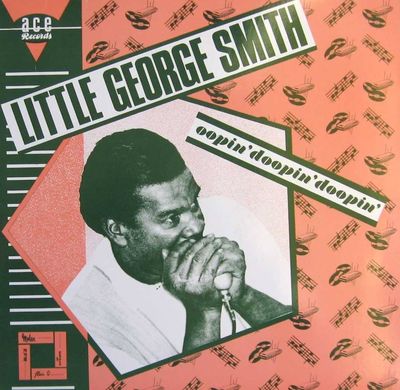
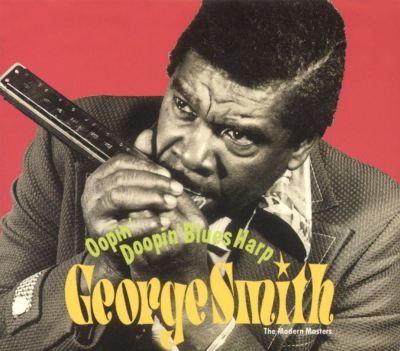
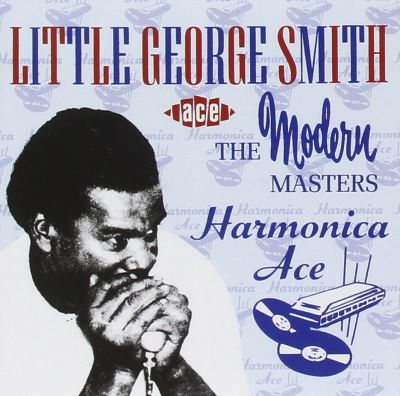
OOPIN' DOOPIN' DOOPIN'
Ace
OOPIN' DOOPIN' BLUES HARP
P-Vine
HARMONICA ACE
Ace
August 1955 - 1956
George apprend l'harmonica avec sa mère Jessie dès l'enfance. Il joue dans différents groupes pendant les années 40 et tourne notamment avec les Jackson Jubilee Singers. Arrivé à Chicago en 1949, il joue sporadiquement derrière Muddy Waters (et fait même partie de son orchestre pendant quelques temps) et Otis Rush. En 1955 alors qu'il travaille à Kansas City depuis plusieurs mois, il est repéré par le producteur Joe Bihari. Celui-ci lui propose d'enregistrer pour son label RPM. Plusieurs séances à Kansas City et Los Angeles en 1955 et 1956 sont organisées avec des musiciens restés malheureusement non identifiés. Cette première oeuvre démontre sa virtuosité à l'harmonica chromatique amplifié sur de superbes morceaux West Coast comme "Telephone blues", "Oopin' doopin' doopin'", "Blues stay away", "Rockin'", "Blues in the dark", "Love life", "California blues", "Early one monday morning", "You don't love me". La même année, après une tournée avec Champion Jack Dupree et Little Willie John, il s'installe définitivement à Los Angeles.
George learned the harmonica from his mother Jessie as a child. He played in various bands during the 1940's, notably touring with the Jackson Jubilee Singers. Arriving in Chicago in 1949, he played sporadically behind Muddy Waters (and even joined his orchestra for a while) and Otis Rush. In 1955, while working in Kansas City for several months, he was spotted by producer Joe Bihari. Bihari offered him to record for his RPM label. Several sessions in Kansas City and Los Angeles in 1955 and 1956 were organized with musicians who unfortunately remain unidentified. This first work showcases his virtuosity on the amplified chromatic harmonica on superb West Coast pieces such as "Telephone blues", "Oopin' doopin' doopin'", "Blues stay away", "Rockin'", "Blues in the dark", "Love life", "California blues", "Early one monday morning", "You don't love me". That same year, after touring with Champion Jack Dupree and Little Willie John, he settled permanently in Los Angeles.
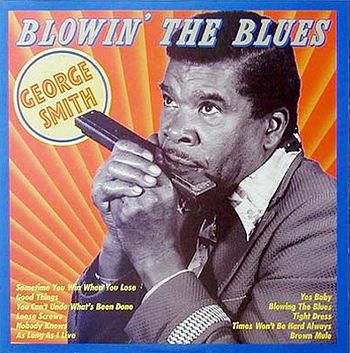
BLOWIN' THE BLUES
El Segundo
1960 - 1968 (LP version)
1956 - 1957 / 1960 - 1968 / 1978 (CD version)
Après sa période RPM, George travaille pour différents petits labels californiens. Il retrouve une certaine stabilité avec le producteur Nat Mac Coy qui l'engage pour ses labels Sotoplay et Carolyn. Pour ceux-ci, George va enregistrer régulièrement durant les années 60 de superbes blues comme "Blowing the blues", "Yes baby", "Nobody knows", "Times won't be hard", "Loose screws". Derrière lui, on trouve d'excellents sidemen comme Jimmy Nolen, Ernest Lane, Marshall Hooks ou J.D. Nicholson. La réédition CD parue en 1998 augmente considérablement la tracklist avec quelques morceaux pour le label Lapel ("Miss O'Malley's rally", "I don't know"), certains titres additionnels Sotoplay/Carolyn ("Come on home", "The Avalon boogaloo" ou la reprise de "Summertime"). On trouve aussi deux titres gravés en 1978 avec William Clarke (en particulier l'excellent "Teardrops fallin'").
After his RPM period, George worked for various small californian labels. He found stability with producer Nat McCoy, who signed him for his Sotoplay and Carolyn labels. For these labels, George regularly recorded superb blues tracks such as "Blowing the blues", "Yes baby", "Nobody knows", "Times won't be hard", "Loose screws" throughout the 1960's. Behind him, we found excellent sidemen such as Jimmy Nolen, Ernest Lane, Marshall Hooks, and J.D. Nicholson. The 1998 CD reissue considerably expanded the tracklist with a few tracks for the Lapel label ("Miss O'Malley's rally", "I don't know"), and some additional Sotoplay/Carolyn tracks ("Come on home", "The Avalon boogaloo" and the cover of "Summertime"). There are also two tracks recorded in 1978 with William Clarke (particularly the excellent "Teardrops fallin'").
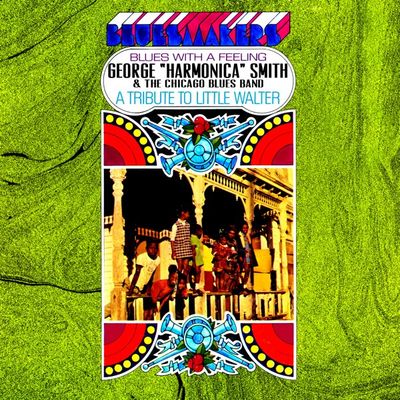
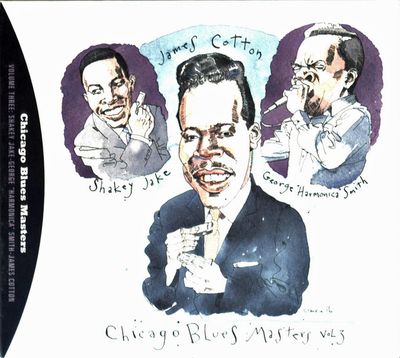
BLUES WITH A FEELING
World Pacific
Liberty
BGO
CHICAGO BLUES MASTERS vol.3
Capitol
October 1968
Dès 1966, George "Harmonica" Smith rejoint à nouveau le groupe de Muddy Waters. Il figure notamment sur l'album live "Authorized bootleg" et joue derrière ce dernier au festival de Newport en juillet 1967. Cet album que George enregistre avec Muddy et ses musiciens (Otis Spann, Luther Johnson, S.P. Leary) rend hommage à Little Walter (décédé accidentellement quelques mois plus tôt). Gravé en 3 jours à Los Angeles, ce "Blues with a feeling" démontre une fois encore la virtuosité et l'inspiration de George "Harmonica" Smith à l'harmonica diatonique et chromatique. La tracklist est intense de bout en bout et on peut ressortir de fabuleuses versions de "Can't hold out much longer", "My babe", "Juke", "Last night" ou encore la version instrumentale de "Everything gonna be alright". Dans certaines rééditions CD, on peut trouver trois titres supplémentaires (dont une belle version de "Goin' down slow" et "Love with a feelin'" chanté par Lucille Spann).
In 1966, George "Harmonica" Smith rejoined Muddy Waters' band. He notably appeared on the live album "Authorized bootleg" and played behind the band at the Newport Festival in july 1967. This album, recorded by George with Muddy and his musicians (Otis Spann, Luther Johnson, S.P. Leary), pays tribute to Little Walter (who had died accidentally a few months earlier). Recorded in three days in Los Angeles, this "Blues with a Feeling" once again demonstrates George "Harmonica" Smith's virtuosity and inspiration on the diatonic and chromatic harmonica. The tracklist is intense from start to finish, and includes fabulous versions of "Can't hold out much longer", "My babe", "Juke", "Last night" and the instrumental version of "Everything gonna be alright". Some CD reissues feature three additional tracks (including a beautiful version of "Goin' down slow" and "Love with a feelin'" sung by Lucille Spann).
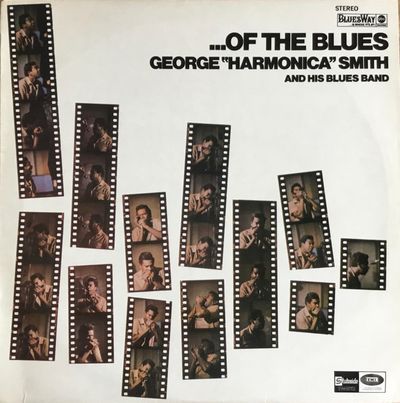
OF THE BLUES
Bluesway
February 1969
Sous la supervision du producteur Bob Thiele, George "Harmonica" Smith enregistre ici dans un environnement plus sophistiqué avec section cuivres. Le titre d'ouverture "A letter to the president" est un message humaniste sur tempo lent. Dans cette tracklist inégale, on apprécie surtout les instrumentaux "Ode to Billie Joe", "Juicy harmonica" qui sortent du lot. Par moments, il est accompagné par un de ses élèves Rod Piazza (chant et harmonica).
Under the supervision of producer Bob Thiele, George "Harmonica" Smith recorded here in a more sophisticated setting with a horn section. The opening track "A letter to the president" is a slow-tempo humanist message. In this uneven tracklist, the instrumentals "Ode to Billie Joe" and "Juicy harmonica" stand out. At times, he is accompanied by one of his students, Rod Piazza (vocals and harmonica).
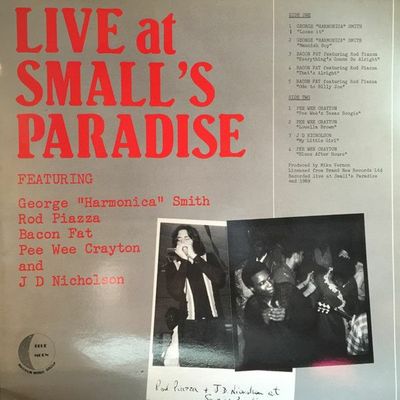
LIVE AT SMALL'S PARADISE
Blue Moon
November 1969
Deux titres live dans lesquels George est accompagné du groupe Bacon Fat, l'instrumental "Loose it" et une reprise de "Mannish boy".
Two live tracks featuring George with the band Bacon Fat, the instrumental "Loose it" and a cover of "Mannish boy".
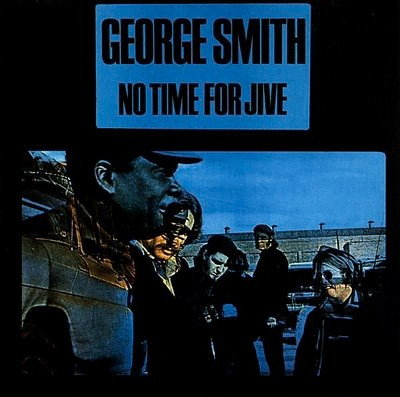
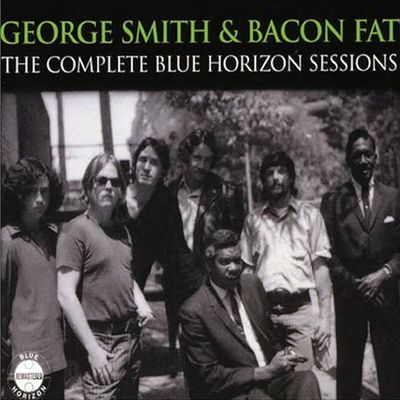
NO TIME FOR JIVE
Blue Horizon
November 1969
THE COMPLETE BLUE HORIZON SESSIONS
Blue Horizon
November 1969 / November 1970
L'association des musiciens blancs de Bacon Fat (emmenés par Rod Piazza) avec George "Harmonica" Smith permit à ce dernier de toucher un nouveau public. Attiré par ce regain de notoriété, le producteur anglais Mike Vernon organise une séance studio à Los Angeles avec l'ensemble des musiciens puis une tournée - un an plus tard - en Angleterre pour promouvoir le disque. La partie studio a donné l'album "No time for jive" dans lequel George, toujours très en forme à l'harmonica, est accompagné de Bacon Fat et des excellents guitaristes "Pee Wee" Crayton et Marshall Hooks. On trouve de remarquables moments comme les slow blues "Mississippi river blues", "I don't want to go baby", "No time for jive" mais aussi le puissant "Soul feet". La réédition CD "The complete Blue Horizon sessions" a permis de découvrir une poignée de morceaux live capturés lors de cette tournée en Angleterre. On trouve d'intéressantes versions de "Telephone blues" ou "Blues with a feeling" parmi d'autres.
The association of Bacon Fat's white musicians (led by Rod Piazza) with George "Harmonica" Smith allowed the latter to reach a new audience. Attracted by this renewed notoriety, english producer Mike Vernon organized a studio session in Los Angeles with all the musicians, followed by a tour - a year later - in England to promote the album. The studio segment resulted in the album "No time for jive", in which George, still in great form on harmonica, is accompanied by Bacon Fat and the excellent guitarists "Pee Wee" Crayton and Marshall Hooks. Remarkable moments include the slow blues "Mississippi river blues", "I don't want to go baby", "No time for jive" and the powerful "Soul feet". The CD reissue "The complete Blue Horizon sessions" has revealed a handful of live tracks captured during this english tour. There are interesting versions of "Telephone blues" or "Blues with a feeling" among others.
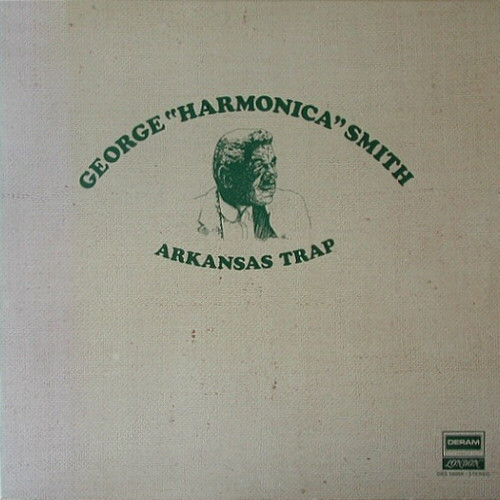
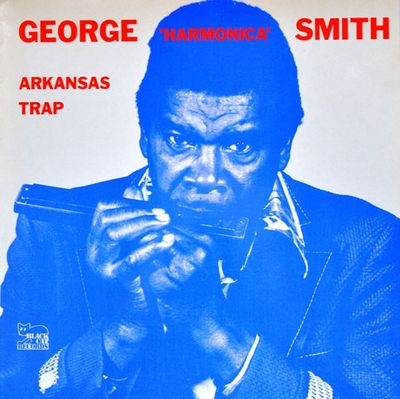
ARKANSAS TRAP
Deram
Black Cat
November 1970
Pendant la tournée anglaise de George "Harmonica" Smith, le producteur Mike Vernon lui propose d'enregistrer un autre album studio avec Bacon Fat. Plutôt intéressant, cet "Arkansas trap" semble n'avoir jamais été réédité en CD. Pourtant, il mérite une écoute attentive, en particulier les morceaux "Situation blues", "Roaming", "Blue fog" et "Trying to hide the things I do".
During the UK tour of George "Harmonica" Smith, producer Mike Vernon suggested he record another studio album with Bacon Fat. Rather interesting, this "Arkansas trap" appears to have never been reissued on CD. However, it's worth a careful listen, especially the tracks "Situation blues", "Roaming", "Blue fog" and "Trying to hide the things I do".
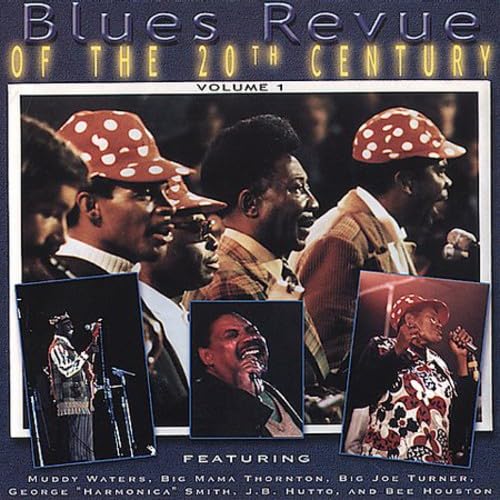
BLUES REVUE OF THE 20TH CENTURY vol.1
Topcat
October 1971
Deux titres live dans lesquels George est, une nouvelle fois, accompagné par le groupe de Muddy Waters.
Two live tracks in which George is, once again, accompanied by Muddy Waters' band.
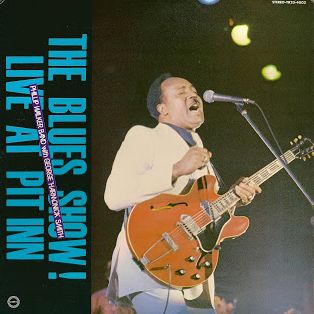
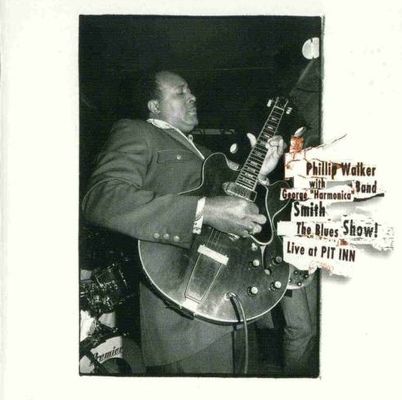
THE BLUES SHOW : LIVE AT PIT INN
Yupiteru
P-Vine
November 1979
Dans ce concert de Philip Walker, George "Harmonica" Smith prend deux titres en leader : l'instrumental "Blues blowin' up" et "Mississippi river blues".
In this Philip Walker concert, George "Harmonica" Smith takes the lead on two tracks : the instrumental "Blues blowin' up" and "Mississippi river blues".
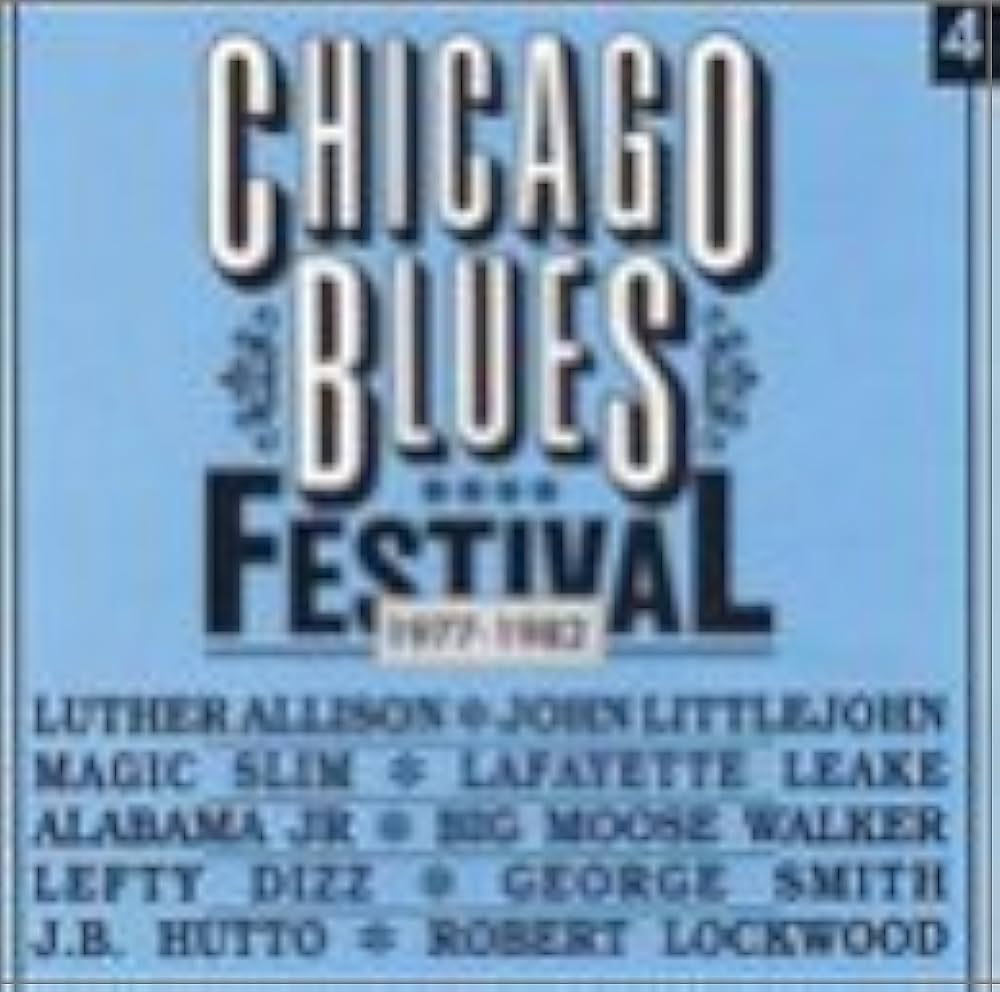
CHICAGO BLUES FESTIVAL vol.4
Black & Blue
December 1980


BOOGIE 'N WITH GEORGE
Murray Brothers
NOW YOU CAN TALK ABOUT ME
Blind Pig
April 1982
Toujours en lien avec la nouvelle génération d'harmonicistes californiens (William Clarke, Rod Piazza), George est, d'ailleurs, ici associé à Rod Piazza et son groupe (Honey Piazza, Junior Watson, Bill Stuve, Bill Schwartz, Doug Mac Leod). Un album sympathique avec "Astatic stomp" joué à deux harmonicas ou le puissant instrumental "Boogie 'n with George". La réédition CD de Blind Pig enlève un morceau de la tracklist initiale mais rajoute un titre inédit ("Last chance").
Always in touch with the new generation of californian harmonica players (William Clarke, Rod Piazza), George is here associated with Rod Piazza and his band (Honey Piazza, Junior Watson, Bill Stuve, Bill Schwartz, Doug MacLeod). A pleasant album with "Astatic stomp" played on two harmonicas or the powerful instrumental "Boogie 'n with George". The CD reissue of Blind Pig removes one track from the original tracklist but adds a previously unreleased track ("Last chance").
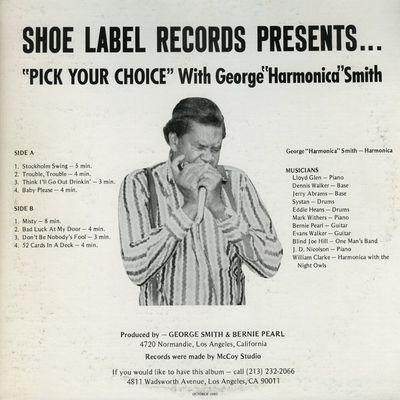
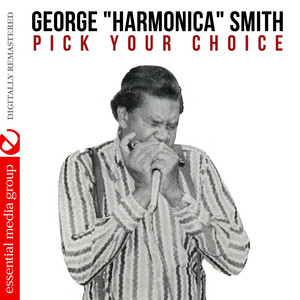
PICK YOUR CHOICE
Shoe
Essential Media Group
October 1982
Dans cette séance organisée semble t-il par Bernie Pearl, George "Harmonica" Smith ne prend, en fait, que trois titres en leader (il ne joue pas sur les autres titres du disque).
In this session apparently organized by Bernie Pearl, George "Harmonica" Smith actually only takes three songs as leader (he does not play on the other tracks on the album).
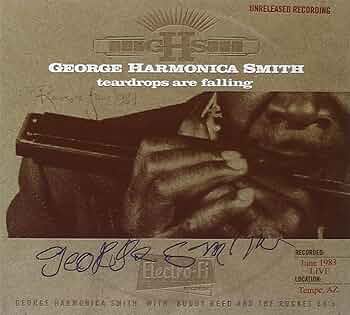
TEARDROPS ARE FALLING
Electro-Fi
June 1983
Ce CD édité en 2011 par Electro-Fi déterre un concert de George "Harmonica" Smith accompagné par Buddy Reed & The Rocket 88's quelques semaines avant sa mort. Même si la qualité sonore n'est pas parfaite, il s'agit d'un opus intéressant quoique peu original qui devrait plaire aux amateurs confirmés.
This CD, released in 2011 by Electro-Fi, unearths a concert by George "Harmonica" Smith accompanied by Buddy Reed & The Rocket 88's a few weeks before his death. While the sound quality isn't perfect, it's an interesting, if somewhat unoriginal, opus that should please confirmed fans.